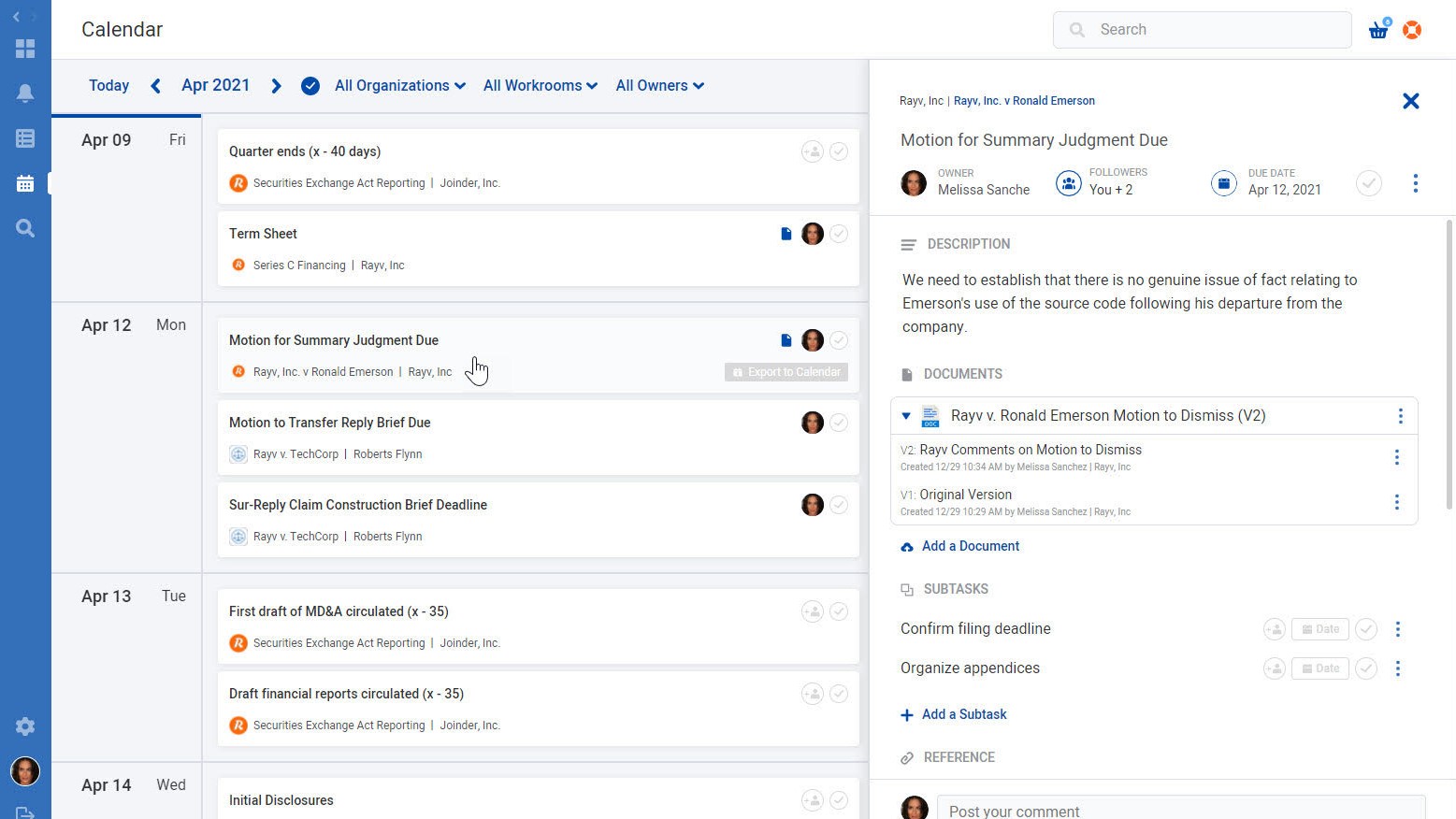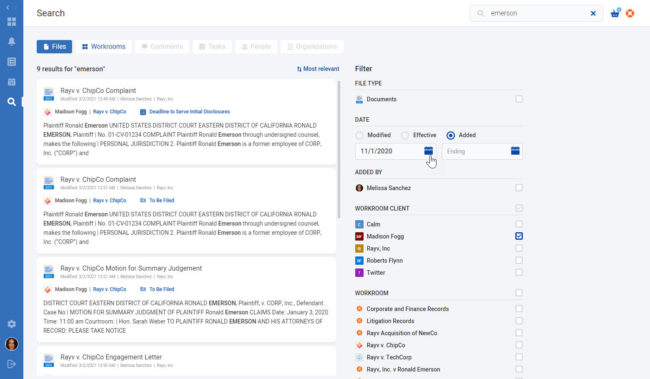With the aim of providing corporate legal departments with a single system-of-record that joins together all of their internal and external legal work product, the company Joinder, which spun off last year from the global law firm Orrick, is today formally launching its platform.
The company describes its platform as one that “puts corporate legal in control” by providing an organized and searchable system-of-record for all a corporation’s legal work, spanning litigation, corporate and IP, compliance and legal operations.
It is designed to be used by corporate legal departments of any size and their outside law firms, working together in a single, secure, cloud-based system that combines task management, calendar management and document management.
“Work product, records, deadlines, and tasks have long been controlled by outside law firms,” said Don Keller, Joinder CEO and former Orrick partner and founder of Orrick Labs. “Joinder flips that script and puts control firmly in the hands of legal departments.”
The platform combines elements of document management, calendaring, task management and collaboration, and brings them together in a manner that spans all legal work and that can include all internal and external teams involved in that work.
During a briefing yesterday, Keller and Chief Product Officer Jim Brock said that this is not a matter-management platform, but rather one for managing the legal department’s work product. Keller analogized it to Salesforce for sales professionals and Workday for HR professionals.
Corporate legal has had no comparable system-of-record, Keller said, because outside law firms and vendors have traditionally controlled the work product.
“Our view is it’s time to move that back into the company’s boundaries, and when you do, when the company gets control of the work product, which is what we’re all about, then that becomes the center of their universe,” Keller said.
“In effect, we become the Salesforce of the legal department because we organize and control the work product.”
Calendaring and Collaboration
Within Joinder, all work is organized in what it calls Workrooms. Joinder provides a variety of “no-code” templates or playbooks that a user can clone and customize to create a Workroom. These templates contained standard sets of tasks and folders for different types of matters.
Examples of these templates include subpoena response, legal hold, outside counsel coordination in a patent matter or an employment matter, and a secure data room. Joinder will also work with customers to create custom Workrooms.
Inside each Workroom is where all of the documents related to a matter are housed and where project members can collaborate on documents (including versioning) and share tasks and updates. Administrators can set permission levels to control what members can see within a Workroom.
Workroom templates include file-folder taxonomies that were developed based on Orrick’s document classification structures. Brock said an upcoming release of the platform will include automatic filing of work product into these taxonomies.
“We think a system of record can be much better when it’s automated in terms of how things are organized,” Brock said.
Joinder also provides a shared central calendar that includes all deadlines and tasks across all cases, projects and firms. Users can also search universally across all matters.
For Any Law Department
Keller and Brock said that Joinder is suitable for law departments of any size, from a single-person to the largest departments.
“We think the best targets for us initially are those departments that are attempting to organize their work, and are forward-looking, and would benefit from having control and access,” Keller said. Among its customers already are Juniper Networks and GoPro.
They also expect law firms to be customers, particularly those that are focused on providing benefits to their clients, Keller said. “The competitive advantage that the law firm gains by giving the clients the ability to access and see things as projects are ongoing. That’s where we see the opportunity on the law firms.”
Keller and Brock said that Joinder will eventually integrate with document management systems such as iManage and NetDocuments, but that those integrations are not high on their priority lists because many legal departments use neither DMS.
In fact, they said, Joinder functionally operates as a “distributed document management system,” where, instead of having all the documents in a central repository, they are where the work is being done.
“That’s an alternative approach for legal departments to have with respect to document management systems, in that respect,” Keller said. “It’s an alternative that a legal department that is trying to address how to manage documents can use our system and not have to have a separate DMS.”
The cost of Joinder is set at $99 a month per team member. That includes free access by outside law firms or other outside professional organizations involved in a matter.
Joinder was originally developed within Orrick Labs, which develops custom technology solutions, and was the first Labs product to spin off as a separate company.
Orrick used Joinder to launch Privacy In A Box, a solution that allows companies to generate privacy policies and procedures and manage data-privacy functions.
 Robert Ambrogi Blog
Robert Ambrogi Blog
